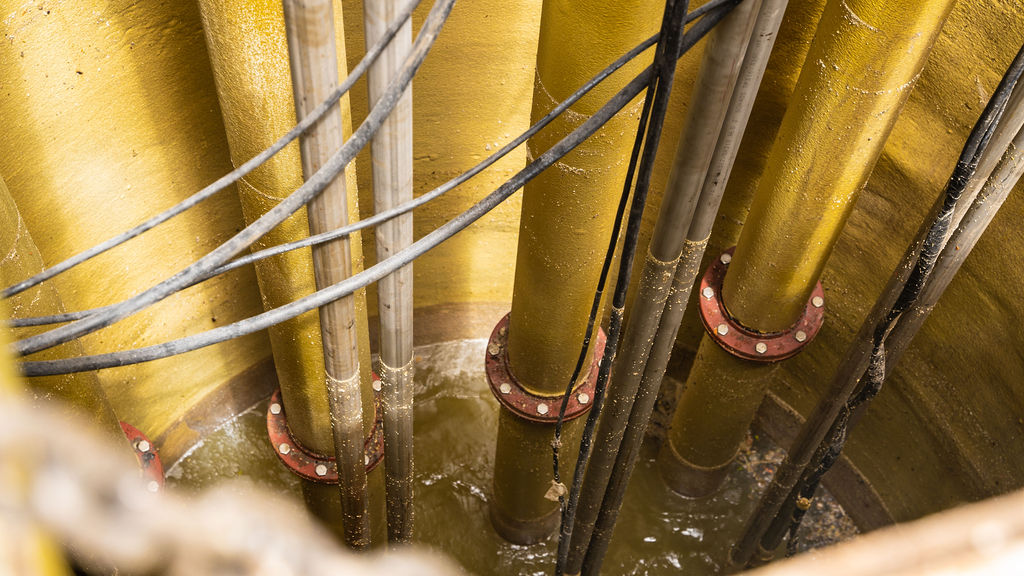Trenchless vs. Traditional: Municipal Water Infrastructure Repair Options Compared
It’s a situation we see all over the United States. Crumbling infrastructure with a hodgepodge of short-term fixes that are continuing to fail. Public and municipal services across the country are balancing limited budgets with repair needs approaching critical failure.
Most cities have tried several solutions, from cementitious patches and linings to polymeric materials and everything in between. Many have gone through long road and utility closures, inconveniencing local citizens, only to experience new failures every few years.
SAVE THE HEADACHES; GO WITH SPRAYWALL
Of course, you could save taxpayers (and yourself) much hassle by going with SprayWall®. SprayWall® is the industry standard for spray-applied pipe liners (SAPLs). When the University of Texas at Arlington developed a study of SAPLs, SprayWall® not only outperformed cementitious solutions in sealing and increased the structural integrity of the pipes by 800% — 4x stronger than cementitious solutions.
SprayWall® gels within 8 seconds and is tack-free after two minutes. The entire curing process is complete in 72 hours. This means that in the time it takes to divert traffic, disrupt flow and service and begin digging, your repairs could be completed with SprayWall®.
Not sure? Read on! In this post, we will dive into some of the common issues met in these approaches and examine some practical solutions. While many trench or dig-based repairs are expensive and time-consuming, not all trenchless solutions perform better.
CAUSES OF MUNICIPAL SEWER AND WATER LINE FAILURE
Some of the common issues that cause municipal water and sewer line failure are:
-
- Corrosion – this can be due to surface water infiltration and inflow, impact loading from traffic or infrastructure at the surface, freeze-thaw cycles, or chemical corrosion.
-
- Erosion – The surfaces under these lines can be susceptible to erosion both within the pipe over time (particularly in cement and metal construction) and in the ground around the line. When a drainage line is compromised, the flowing water (no longer restricted to inside the pipe) erodes sand, rock, and dirt further downstream, leaving cavities around the pipes. These cavities will wreak havoc on the line as the surface pavement or ground settles or develops sinkholes.
-
- Deterioration – The reality is that most municipal water infrastructure in the U.S. uses the same basic materials and construction. Brick and mortar, corrugated metal, concrete, stone, and tile can all fall victim to material breakdown over time. Even box or precast construction will break down under the stress of everyday use and exposure.
City engineers and municipal managers are then faced with a frustrating dilemma: take on large projects which interrupt traffic and disrupt or divert flow. Traditional fixes usually involve trenching out near damaged portions of lines, which adds to cost and time. Manhole to manhole repairs carry skyrocketing costs and use very temporary fixes. On top of that, traditional repairs expose laborers to mold, asbestos, and natural gas risks. Traditional open-trench repairs are costly, risky, and rarely provide a long-term fix.
ALTERNATIVES TO TRADITIONAL OPEN-TRENCH OR DIG AND REPLACE REPAIRS
Several alternatives have emerged on the market to minimize disruption in recent years. However, many of these solutions act more like a bandage than a solution. Many cities will consider polymeric or cementitious materials to provide repairs to corrosion or structural issues.
These solutions include:
-
- Cast-in-Place Pipe Lining Typically, a cementitious coating is applied from the inside of the pipes ranging from 30” up to around 120” in diameter. While cast-in-place linings offer some high-strength recoating, they are susceptible to the same failures as the original material (deterioration, erosion, and corrosion). These methods can also suffer shrinkage and cracking. Finally, depending on the application, this method may not be suitable for exposure to chemicals or bacteria found in sewer lines.
-
- Spin-Cast Lining Spin casting is a variation on cast-in-place pipelining. A tool is inserted into the damaged pipe and run continuously back and forth down the length of the line, evenly casting thin layers of cementitious grout or mortar on the original substrate. As you may have guessed, however, spin-casting lacks standalone structural integrity and depends significantly on the condition of the original substrate.
-
- Sliplining Sliplining is a trenchless technique where a new pipe is “slipped” into the existing, damaged line. It is cost-effective and minimally disruptive. The diameter of the pipe is reduced to accommodate the new pipe, but it does require the host pipe to withstand the load pressure during installation, as well as grouting pressure and external loads over the long term.
-
- Gunite/Shotcrete This repair style uses a high-volume concrete mixture with a high-pressure pneumatic application, spraying from a hose and splatter coating the existing substrate at a high velocity to line the pipe. Some downsides include a much shorter lifecycle than new pipe or other methods already mentioned. Curing time is longer, and total job time is lengthened compared to other methods.

These solutions can be more cost-effective than traditional “dig and replace” repair methods. However, as is so often said, “the devil is in the details.”
Cast-in-place or spray-in-place repairs involve a material being sprayed on the pipe’s lining. The materials used in these methods will vary in makeup—from epoxy to resin, polymeric and cementitious—but typically provide reasonable repair for corroded pipes. Often, your lines need not only a solution for corrosion, erosion, and deterioration but also a structural solution. Cementitious sewer repairs or polymeric line restorations (regardless of their installation methods) often still fail due to hydrostatic loads. Don’t believe us? Consider the City of Montgomery, AL, which went through years of continual repair failure using polymeric and cementitious methods.
If your city is ready to fix its deteriorating water and sewer system for good, SprayWall® is the solution. Minimize disruptions, control costs, and rest easy, knowing your underground pipes and structures will give you at least 50 years of problem-free service. Contact a Certified Sprayroq™ Partner today!



